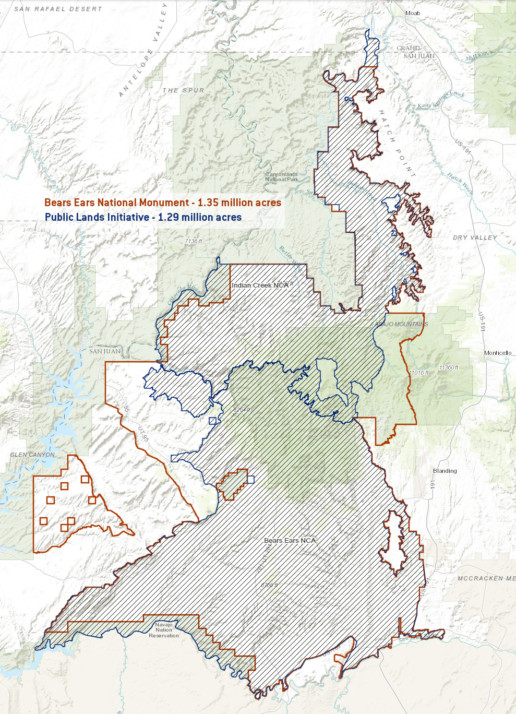I want to make this first point as clear as possible – there is almost universal agreement that the area now known as Bears Ears National Monument is outstanding and worthy of protection. The argument we are hearing today is not about WHAT was designated, it is entirely about WHO designated it.
Representative Greg Hughes specifically refers to the size of the monument as evidence the proclamation is a massive overreach of power by President Obama. This argument centers on the language of the Antiquities Act. This act, passed by Congress in 1906, gives the President unilateral authority to
Declare by public proclamation historic landmarks, historic and prehistoric structures, and other objects of historic or scientific interest that are situated on land owned or controlled by the Federal Government to be national monuments the limits of the parcels shall be confined to the smallest area compatible with the proper care and management of the objects to be protected.
Hughes insists we should focus on the “smallest area compatible” and that 1.35 million acres far exceeds the amount of land worth protecting.
So I decided to compare it to the plan presented by Republicans Rob Bishop and Jason Chaffetz. When they introduced the Public Lands Initiative in 2016, they proposed protecting these lands with two National Conservation Areas; Bears Ears NCA at 857,603 acres and Indian Creek NCA with 434,354 acres, for a combined total of 1.29 million acres.
These two NCAs are nearly identical in size to the 1.35 million acres set aside as Bears Ears National Monument.
A comparison between the final boundaries of Bears Ears National Monument and the proposed boundaries of two National Conservation Areas in the Public Lands Initiative. Map courtesy of Outdoor Alliance GIS Lab
So, if it isn’t about the size, what is it about?
Ironically enough, whether the areas are designated as an NCA, or as a National Monument, the resulting impact on the landscape is largely the same. This is because protection almost entirely depends on what shape the management plan takes, and the management plan is not created at designation, but requires a multi-year process of negotiation, public input, and compromise. We can’t say with certainty what the management impacts will be until we see an actual management plan, and anyone who suggests otherwise is pre-emptively fear mongering.
While there are subtle differences in management structures between the two designations, ultimately both allow enough flexibility to address any and all of the potential issues.
This is about theatrics. This is about politics. It definitely isn’t about the size of the monument.
Recommended Reading:
National Monuments and National Conservation Areas: A Comparison in Light of the Bears Ears Proposal

